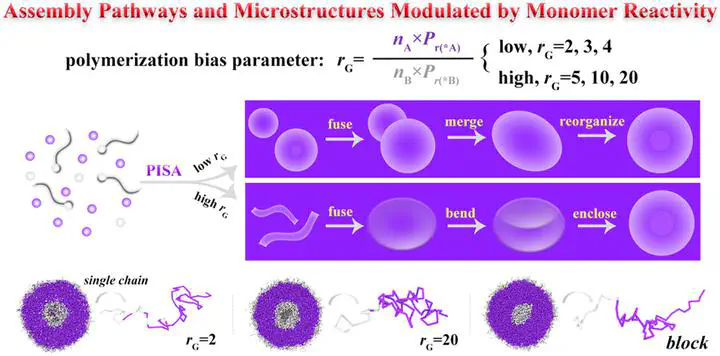Polymerization-Induced Self-Assembly for Modulating Assembly Pathways and Microstructures of Amphiphilic Gradient Copolymer Nanoparticles

摘要
Polymerization-induced self-assembly (PISA) offers a versatile platform for designing polymeric nanoparticles. Amphiphilic gradient copolymers, characterized by a gradual transition from hydrophilic to hydrophobic segments, exhibit reduced interfacial tension and enhanced stimulus responsiveness. However, the interplay between polymerization and self-assembly in PISA, influenced by the monomer feed ratio and reactivity, remains ambiguous. Herein, we employ coarse-grained simulations to investigate the role of the effective polymerization bias between monomers. Our results reveal that the relative monomer reactivity plays a key role in determining both the copolymer sequence and the vesicle formation pathway. At low reactivity differences, comparable monomer reactivities facilitate a cooperative polymerization-assembly process that produces numerous small spherical assemblies, which subsequently merge and reorganize into vesicles. In contrast, high reactivity asymmetry favors the formation of anisotropic worm-like micelles that progressively fuse, bend, and enclose into vesicular structures. Microstructural analysis further shows that gradient copolymer vesicles possess internal cavities larger than those formed from block copolymers. These insights provide guidance for tailoring vesicle formation pathways and fine-tuning microstructures for potential applications in drug delivery and materials science.